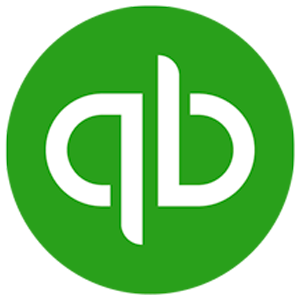As an accountant or bookkeeper, there’s a good chance you take recurring payments from your clients. Paper checks are common in the B2B world, and the ritual of a signed, sealed, delivered paper payment is entrenched in the psyche of many business owners. Some accountants follow a more contemporary payment model by sending online invoices that allow clients to pay with a credit card. Between paper checks and plastic credit cards, you may – or may not – be surprised to learn there’s a better way: accepting ACH payments. As an accountant, you’re well aware of the bottom line. Why not save a little money for your own business, with the added benefit of making life easier for everyone?
What is ACH?
Everyone is familiar with credit cards, debit cards, cash, and checks, but what exactly are ACH payments? ACH stands for the Automated Clearing House. A clearinghouse is a third party that facilitates payments between one entity and another. When it comes to paper checks, this entity is usually a federal reserve bank.
When it comes to ACH payments, payments are made right from one bank to another. The ACH network is managed by NACHA (National Automated Clearing House Association), a non-profit organization that consists of the parties it serves – big banks, local banks, and even businesses. ACH operators send electronic payments in several batches throughout each and every business day.
This is in contrast to credit cards, which are managed by for-profit businesses like Visa, Mastercard, American Express, and Discover. These companies generally charge business owners anywhere from 2% to 4% just for the privilege of accepting plastic, in addition to all the other fees business owners have to pay.
Why would accountants want ACH?

Credit card payments process relatively quickly. By contrast, ACH payments may take 3 to 5 business days to settle. Despite the waiting time, accountants accepting ACH payments will realize a number of other benefits that offset the slight delay.
For one, accepting ACH payments makes a better experience for your accounting clients, especially if you have a retainer relationship with them. Instead of having to remember to send you a check or open up a link to a payment portal, payments will automatically be debited from their business checking account and credited into yours. Accepting ACH payments in Quickbooks is also a possibility because payment processors like Rotessa often integrate with accounting and inventory software, which also makes life easier for both you and your clients
Collecting payments via ACH for accounting services are great because you will get your payments on time, every month or quarter. Even if you send a client an invoice once a year (say, for a corporate tax return), collecting ACH payments is still beneficial because it will happen automatically. There’s no need to follow up with clients on the phone, email, or paper invoice in the mail.
Arguably, the biggest benefit to ACH in accounting is that you, the accountant, will save money. This is because credit card companies charge anywhere between 2 to 4% for their services, whereas ACH payments cost an average of $0.29 per transaction, according to NACHA. You can also build these savings into your pricing, rendering your accounting services more appealing than those provided by other accounting firms.
Paper checks can also be costing you money to accept as well because most banks will charge fees to process paper checks.
According to some estimates, outsourcing small business bookkeeping services costs anywhere between $500 to $2,5000 on average. If those prices sound familiar to you that means accepting credit card payments with a 3% fee could be costing you anywhere between $15 and $75 per month, per client. Wouldn’t you rather just pay $0.29 to collect your accounting fees?
How to accept ACH at your accounting firm

With all these benefits, you are probably wondering how to start accepting them. Accepting ACH payments is really as simple as collecting basic banking information from your clients such as accounting and routing numbers, along with the consent to collect pre-authorized payments. You can also collect this information and authorization over the phone, but only if you have a pre-existing relationship with the client.
The easiest way for an accountant to get situated to take ACH payments is to just build that expectation into the onboarding process via the contract you have your clients sign. If ACH authorization is part of the contractual agreement you present upfront, they will know what to expect. If your accounting firm primarily serves businesses, there is a good chance they will already be familiar with ACH payments and appreciate the ease of payment they facilitate.
Accountants who also serve individuals can still collect ACH payments as all of your clients are going to have a bank account. They may sometimes need assistance finding their banking information, but that’s almost always a quick fix – you can direct them to the numbers on the bottom of a check, collect a check yourself, or help them locate this information via their online banking portal.
So getting set up to collect ACH payments is not that difficult. But what about the process of running them when it comes time to pay? Thankfully that can be easily automated as well by using a third-party payment processor (TPPP). A payment processor will provide an ACH authorization that can be plugged into your website or payment portal. They’ll handle frontline screening for fraud, along with securely storing sensitive client data (e.g., their banking info). And when it comes time to run the transaction, the TPPP will take care of that as well on the backend, leaving you with more time and energy to run your business.
Even better, ACH payments made with a TPPP can often be integrated into other software like Quickbooks or Xero. This means you won’t have to manually input information, check off invoices as paid, or double-check your work – at least in regards to collecting payments.
Conclusion
If you’re an accountant or own an accounting firm, ACH payments are an excellent way to collect accounting fees, and for that matter to make payments to employees and vendors. ACH payments are not like checks, nor are they like credit cards, and they’re much less expensive than either. Take a look at why over 2,000 small businesses are using Rotessa to receive ACH payments. Rotessa is free to use, free to set up, and there is no monthly minimum spend. It integrates wonderfully with other accounting and invoicing software as well, making your accounting work more cost-effective and efficient.
Share this content with a friend:
A better way to get paid
Withdraw money directly from your customer’s bank account when their payments are due. Schedule one-time or recurring payments to get paid on time.

